Celebrate Nature’s Magic: European Day of Parks 2025
©Wendy McDonnell, Aysgarth Falls, Yorkshire Dales National Park
This weekend, Protected Areas across Europe will throw open their doors for an unforgettable celebration of nature, culture, and community spirit!
Celebrate Nature’s Magic
The European Day of Parks 2025 is just around the corner, and the EUROPARC Federation is buzzing with excitement as Protected Areas throughout the continent prepare to welcome visitors. This year’s celebration promises to be bigger and more vibrant than ever before—and there’s still time for parks to register their events!
From the fjords of Norway to the meadows of Romania, Europe’s natural treasures are showcasing their diversity through thoughtfully crafted activities. The northern regions are emphasising climate education and geological wonders, with Norway’s Fjord Coast Regional Geopark offering an immersive two-day event exploring the relationship between stone formations, melting ice, and changing sea levels against the backdrop of stunning landscapes.
Moving southeast, the focus shifts to sustainable agriculture and food systems, exemplified by Romania’s Enduro Ranch Park with its comprehensive agri-food exhibition showcasing BIO agriculture, modern machinery, and innovative soil regeneration techniques. This educational approach continues in Turkey, where the Mediterranean Conservation Society is nurturing the next generation of environmental stewards through marine ecosystem training for high school students.
The cultural dimension of conservation takes centre stage in Southern Europe, with Portugal’s Associação BioLiving screening natural history films paired with biologist discussions, while Italy’s Appennino Tosco-Emiliano National Park invites visitors to discover forest bathing—a more spiritual approach to understanding our connection with nature. Not to be outdone, Portugal’s vibrant Festa dos Maios in Cascais celebrates spring with traditional rural festivities including nature walks, workshops, and even donkey and horse “baptisms.”
Community action and engagement form another important theme across the continent. Croatia’s Mura Drava Biosphere Reserve is hosting an educational camp for elementary schoolers focusing on invasive species, while Poland’s Biebzra National Park is mobilising volunteers for a meaningful river cleanup operation. In Slovenia, the Pivka Nature Park combines their 11th anniversary celebration with a scenic hike offering historical exploration and local cuisine, while the UK’s Yorkshire Dales National Park provides a window into cultural heritage through traditional drystone walling demonstrations.
Whether you’re interested in hands-on conservation, cultural traditions, educational workshops, or simply enjoying breathtaking landscapes, the European Day of Parks 2025 offers something for everyone. This weekend celebration highlights not just the natural beauty of our protected areas, but also the innovative ways park managers are connecting with communities and fostering environmental stewardship across generations.
Get Involved!
There’s still time for Protected Areas to register their events and join this Europe-wide celebration. Whether you’re a park manager, a local business or a nature enthusiast, the European Day of Parks 2025 provides the perfect opportunity to connect with local communities and shine a spotlight on the vital work of conservation.
For more information, click here.
To register your event, click here.
From Consultation to Concrete Action for Young People and Climate Action
The process for a Council of Europe recommendation
Following extensive consultations with young people from across Europe, the Council of Europe has formalised its commitment to youth engagement in climate policies. Read how Protected Areas can commit to supporting young people and bringing policy to life in our parks!
The Council of Europe has adopted a new set of recommendations on “Young People and Climate Action”, marking a significant milestone in recognising the vital role of youth in addressing climate change.
From Consultation to Concrete Action
In March 2023, the Council of Europe launched a comprehensive consultation process aimed at understanding young people’s perspectives on climate crisis. As reported in our previous news article, this initiative was in part linked to the movement to incorporate climate justice into the Council of Europe which we see through the cases brought to the European Court of Human Rights and the discussions to incorporate the Human Right to a clean, healthy and sustainable environment.
The consultation engaged young people from diverse backgrounds, including EUROPARC’s Youth Officer, Jessica Micklem-Kolenić. It sought to understand how young people perceive the impacts of climate change on their rights, what actions they believe governments should take, and how they could be meaningfully involved in climate decision-making processes.
Key Recommendations
The newly adopted recommendations (CM/Rec(2024)6), reflect many of the concerns and suggestions during consultation phase. The document outlines several priority areas:

Fridays for future – global climate strike on the European elections in May 2019. By Markus Spiske.
Ensuring Young People’s Access to Rights
Protecting young people’s rights in a changing climate is essential including their rights to life, privacy, and property as guaranteed by the United Nations Convention on the Rights of the Child (UNCRC) and European Social Charter. Peaceful climate demonstrations must be permitted while removing barriers to civic engagement and ensuring access to environmental judicial reviews such as environmental impact assessments. Proper training for law enforcement on responding to youth gatherings is crucial to avoid excessive force. The members of courts require additional training on the climate science and youth climate activism methods to fairly evaluate cases that involve new climate science and unfamiliar protest tactics. Examples include:
- During arrest, legal support should be accessible for all
- Marginalised Indigenous and disadvantaged youth deserve heightened protection
- Recognition of the right to a clean, healthy and sustainable environment in local and European courts for present and future generations
Strengthening Youth Participation
Climate policy development should incorporate young people’s perspectives on crisis impacts, merging scientific evidence with firsthand experiences. Diverse youth participation in climate decision-making requires a supportive environment at all levels. Information on climate legislation must reach young people directly, with their viewpoints integrated into regulatory processes. Capacity building and financial support are vital for youth climate initiatives. The youth climate movement deserves autonomy to be free from interference, while any decision-making processes should eliminate social and gender barriers. Educational systems from early childhood through adulthood should foster ecological awareness and environmental commitment.
Protected Areas can and are contributing to strengthening youth participation. Not only with school visits and tours highlighting the linkages of nature and climate but also through non-formal education initiatives such as the Junior Ranger and Youth+ programmes. These work towards having local young people connected to their natural heritage, understanding the local context and empowered to speak up on behalf of Protected Areas. Some Protected Areas are even able to make micro funds available to their engaged youth, who redirect it into the local community for art and storytelling activities, key tools for reaching others to ignite a passion for sustainability and climate action.
Investing in Green Jobs, Education, and Skills
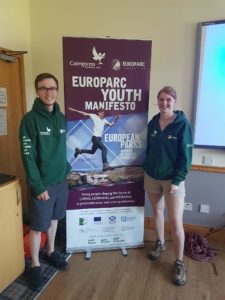
EUROPARC Youth Manifesto Project, 2018.
Education frameworks need adequate funding to equip young people with climate action knowledge and competencies for all career pathways, not just those wanting to go into green careers. Additionally, we need more just transition pathways that provide opportunities for young people to develop green skills. These could be accessible micro-funding schemes for young green entrepreneurs, increased research funding in green technology for young researchers, and funding mechanisms for youth organisations running climate projects, particularly those serving marginalised communities.
There have been significant improvements in creating youth accessible pathways into green careers in and around Protected Area. The EUROPARC Youth Manifesto was one tool, used by young people and Protected Areas to reduce the barriers for young people to live, learn and work in rural areas around the Protected Areas. Protected Areas are also creating learning spaces for volunteers, interns, apprenticeships and including measurements of equality, diversity and inclusion in self-reflections and recruiting processes.
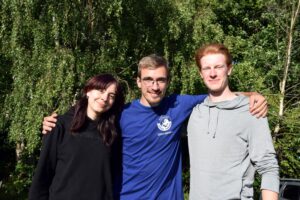
Three Junior Ranger mentors at the IJRC 2024 who were Junior Rangers themselves.
Investing in Tailored Support to Youth Workers
Youth workers play a fundamental role in mobilising environmental advocates and require proper sector funding. Resources for implementing youth-focused climate projects are essential, along with comprehensive training on climate topics for effective knowledge sharing. Multilingual, accessible resources help include all young people in climate action. Climate Advocacy benefits from peer learning exchanges across local to European levels.
The mentors of Junior Ranger and Youth+ programmes are often rangers and environmental education staff, but occasionally are also volunteers with diverse backgrounds. Protected Areas can ensure that these youth workers are sent to regular training or opportunities where they can exchange and learn from others such as at the International Junior Ranger Camp or EUROPARC’s e-Networking meetings. Similarly, the engaged young people and young professionals can be sent to events such as the EUROPARC Conference as a learning and networking experience at the international level.
Ensure Access to Healthcare and Targeted Youth Services
The impact of climate change on young people’s physical and mental health requires mitigation through targeted measures. Eco-anxiety and other climate-related health effects demand research to develop specialised services. Awareness campaigns should educate professionals, parents, and youth about eco-anxiety, with training provided to recognise symptoms. Specialised health services with properly trained providers are necessary for young people experiencing eco-anxiety, with youth involvement in the service design. Healthcare quality and accessibility for disadvantaged groups can improve through strategic investments.
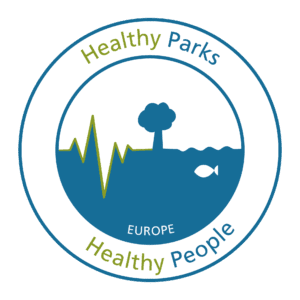 Protected Areas can join the Healthy Parks Healthy People Europe programme, and implement initiatives that tackle eco-anxiety by promoting the message that “nature is a good medicine”. An example of how is the promotion of the Five Ways to Wellbeing in Nature (5WWW), a set of evidence-based actions that promote good mental health and well-being. These five actions — Connect, Be Active, Take Notice, Keep Learning, and Give — are especially effective when practiced in nature, helping to alleviate eco-anxiety and improve overall mental well-being. Another tool is the use of green prescriptions, which encourage individuals to spend more time in nature and engage in outdoor activities to boost mental health. Green prescriptions leverage the therapeutic effects of nature to help people cope with mental health issues, including anxiety related to environmental problems.
Protected Areas can join the Healthy Parks Healthy People Europe programme, and implement initiatives that tackle eco-anxiety by promoting the message that “nature is a good medicine”. An example of how is the promotion of the Five Ways to Wellbeing in Nature (5WWW), a set of evidence-based actions that promote good mental health and well-being. These five actions — Connect, Be Active, Take Notice, Keep Learning, and Give — are especially effective when practiced in nature, helping to alleviate eco-anxiety and improve overall mental well-being. Another tool is the use of green prescriptions, which encourage individuals to spend more time in nature and engage in outdoor activities to boost mental health. Green prescriptions leverage the therapeutic effects of nature to help people cope with mental health issues, including anxiety related to environmental problems.
 Access to Information and the Right to be Informed
Access to Information and the Right to be Informed
Reliable, youth-friendly environmental information based on reputable research should be widely available, primarily through digital formats. Accessibility in various languages, including minority ones, prevents reinforcing existing inequalities. Misinformation on environmental matters requires legal safeguards while maintaining freedom of expression and democratic principles.
There are two ways in which Protected Areas can make information more accessible to young people. Firstly, by engaging with them through youth programmes or the European Youth in Parks Day, an initiative to bring young people and parks together through fun activities, youth dialogues, social media takeovers or highlighting all the efforts to engage with young people over the year. This celebration is for all and can be used to further intergenerational collaboration. The second is by setting up a youth council or youth advisory board which can be involved in decision-making processes, sharing the youth priorities and perspectives to make information more accessible and transparent. These young people are bridges to the local youth and broader community.
Taking Discrimination and Ensuring Intergenerational Equity
Climate justice principles must guide responses to climate change effects, especially for marginalised youth populations. Many young people in rural areas count as marginalised, often coming from low socio-economic backgrounds, and those interested in rural jobs face significant difficulties. Framework development for creating permanent social resilience should include diverse young environmental defenders from all backgrounds, recognizing that youth are not homogenous — young rangers, young farmers, and young entrepreneurs have different aims and perspectives. Intergenerational equity in climate action might be strengthened through dedicated institutions like a commissioner for future generations, encouraging politics with long-term protection for future needs.
The communities in and around most Protected Areas in Europe are classified as rural and even those in periurban areas have young people with refugee, asylum seeker or migrant backgrounds, all of which come with additional difficulties to thrive. Protected Areas can play a large role, recognising the interconnectedness of social issues and environmental issues and tackling them in a holistic and empathetic manner. In addition, Protected Area can be the helping hand for young farmers, entrepreneurs and nature conservationists to restore and protect nature now and in the future.
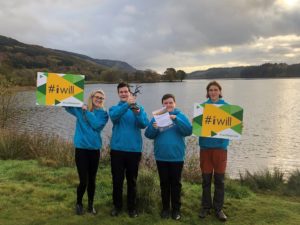
Loch Lomond Youth Committee receive the Best Engagement Project award at the UK National Parks Conference.
The road ahead
The Council of Europe will work with member states to implement these recommendations through its various programmes and initiatives. National governments are encouraged to develop specific action plans that reflect their unique context while adhering to the core principles outlined in the recommendations. Youth organisations, environmental NGOs, and other stakeholders are invited to participate in the implementation process and contribute to monitoring progress.
The adoption of these recommendations represent a significant step forward in recognising young people not just as victims of climate change but as crucial agents of change. It acknowledges their right to participate in decisions that will shape their future and provides a framework for ensuring their voices are heard. This is something EUROPARC is committed to promoting and implementing within the network, for example through the Youth Council.
These recommendations offer a roadmap for inclusive and intergenerational approaches to addressing one of the defining challenges of our time. EUROPARC is committed to promoting the implementation of these strategies at Protected Areas level, and promoting the work that is already being done which contributes to international goals and policies.
For more information, the full text of the recommendations can be accessed here.
Welcome to Marine Protected Area Isole Egadi: A New Member of EUROPARC
©Marettimo-Lombardo
Nestled in the Mediterranean Sea, northwest of Sicily, the stunning Egadi Archipelago is home to Italy’s largest marine nature reserve.
Marine Protected Area Isole Egadi
Established in 1991, the Egadi Islands Marine Protected Area (MPA) spans 53,992 hectares, safeguarding a rich and diverse ecosystem. The islands hold significant ecological value, hosting numerous endemic species and serving as a critical stopover along the Europe-Africa migratory route through western Sicily. The area hosts the largest Mediterranean seagrass meadow (Posidonia oceanica), as well as coral reefs, submerged caves, and archaeological remains.
Recognised as a Special Protection Area (ITA10024) and a SPAMI (Specially Protected Area of Mediterranean Importance) by the UN, the Egadi Islands are not only a haven for biodiversity but also sites of historical and cultural significance. Their geographic isolation has preserved a strikingly wild landscape, where rocky coastlines meet crystal-clear waters, and the seabed reveals remnants of ancient Mediterranean civilisations.
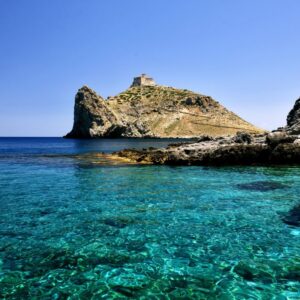
©Pro Loco Isole Egadi
The MPA aims to prioritise marine conservation efforts through the following:
- Protection and enhancement of the marine environment
- Environmental education
- Information sharing and raising awareness of users,
- Research and environmental monitoring
- Integrated management of the coastal strip
- Promotion of sustainable development, mainly tourism
The managing body engages with diverse stakeholders to discuss various environmental issues as well as the socio-economic needs of the territory. These stakeholders are actively involved with territorial development and protection interventions.
The MPA is divided into four zones with varying levels of environmental protection:
Zone A: full protection with the highest level of environmental protection measures
- This is a “no take” zone, bathing is still allowed, guided underwater tours are allowed but only in summer, and only residents can skipper their boats in this area
Zone B: General protection
- In addition to the allowed actions from Zone A, touristic boats such as sailing boats, paddle boats, electric boats and paddleboats are allowed, guided underwater tours are allowed all year round but require a special authorisation certificate. Anchoring is also allowed with special rules for residents and a numerical limit for non-residents. Sport fishing and artisanal fishing are allowed.
Zone C: Partial protection
- In addition to the protections from Zone B, restrictions on navigation and anchoring are reduced. Individual diving, sport fishing and small-scale professional fishing are allowed.
Zone D: Basic protection with few limitations
- In addition to the protections in Zone C, trawling and large-scale purse seine fishing are allowed.
What is prohibited across the MPA is underwater fishing and the collection of organisms, with the exception of sea urchins, which can only be collected by residents, with special permission. Similarly, photography and film shooting, scientific research and whale watching are all allowed but require special permission.
See a map of the zonesSince fishing is the main human activity in the MPA, a strong partnership with the fishermen is a key to the success of the MPA. Already, fishermen are highly involved in all areas of management including:
- helping in projects that enhance the local fish products,
- helping with research,
- helping to test and impement fishing systems that reduce the impact on habitats and resources, in particular invasive species
- helping monitoring activities at sea.
A similar cooperation with tourism operators exists, with initiatives to improve the environmental sustainability of their activities, cleaning up seabeds and coastlines together with citizens and other stakeholders. These activities also increase the sense of belonging and promote awareness of the importance of an intact and healthy environment.
Visit their website here.

©Pro Loco Isole Egadi
Welcome to Ohrid Prespa Transboudary Biosphere Reserve: A New Member of EUROPARC
German ambassador visited transboudary biosphere reserve Prespa in Albania/GBF Consulting Group
We are excited to welcome Ohrid Prespa Transboundary Biosphere Reserve as the latest member of the EUROPARC Federation! Nestled between Albania and North Macedonia, the Biosphere Reserve is a haven for lush forest, shimmering lakes, and rare species.
Balancing Conservation and Community Needs
Designated in 2014 under the Man and Biosphere Programme, this cross-border biosphere reserve is home to two national parks: Galicica (North Macedonia) and Prespa (Albania). The area is recognised for its exceptional biodiversity, rich cultural heritage, and its commitment to conservation the nature and infrastructure.
The Ohrid Prespa Transboundary Biosphere Reserve features unique ecological systems and geological formations, shaped by the sub-tropical mountains and three lakes. Among them, Lake Ohrid stands out as the oldest lake in the Mediterranean.
From Alpine meadows and wetlands to dense oak and beech forest, providing habitats for rare species such as the Dalmatian Pelican (Pelecanus Crispus), the Balkan lynx (Lynx lynx Balcanicus), and the Prespa trout (Salmo Peristericus).

The German ambassador visited the transboundary biosphere reserve Prespa in Albania. (c) GBF Consulting Group
Collaboration with civil society organisations plays a crucial role in conservation efforts, engaging local communities in preserving biodiversity and adopting interdisciplinary biosphere management, such as reforestation programs, and sustainable land-use practises.
Sustainable tourism is a key pillar of the reserve’s long-term viability, with a focus on rural tourism, village tourism, eco-tourism, and eco-friendly food production. In 2023 and 2024, a project was implemented to promote rural tourism in the villages along the banks of the Ohrid and Prespa lakes.
At the heart of the Galicica National Park lies an education centre, serving as a hub for developing and implementing actions plans for the biosphere reserve. The centre hosts practical workshops and educational trainings for the local communities.
Beyond its ecological value, the region has been an important cultural crossroads for centuries. The ancient town of Ohrid, a UNESCO World Heritage Site, is renowned for its medieval churches, including the St. Naum Monastery, and the Church of St. John at Kaneo. The area has deep historical roots, with settlements dating back to the Bronze Age.
Curious to learn more? Click here or here.
Visit their Facebook page.

©Darkocv